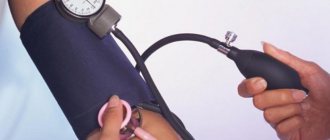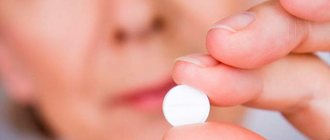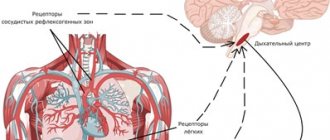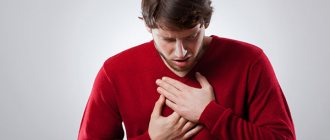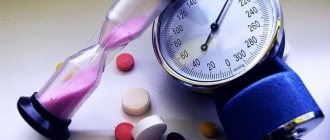Svetlana Shcherbakova
Cardiologist
Higher education:
Cardiologist
Kabardino-Balkarian State University named after. HM. Berbekova, Faculty of Medicine (KBSU) Level of education – Specialist 1994-2000
Additional education:
“Cardiology”
State Educational Institution “Institute for Advanced Training of Physicians” of the Ministry of Health and Social Development of Chuvashia
Contacts
Rehabilitation for arterial hypertension includes psychological assistance, diet, exercise therapy, and, if necessary, drug therapy. These measures are aimed at leveling the circumstances that cause the progression of the disease.
Basics of rehabilitation
The diagnosis of “hypertension” in medicine is made when pressure fluctuates from 140 to 90 mm Hg. Art. and higher.
The approach to developing a rehabilitation program is strictly individual and is drawn up by the attending physician. The patient’s age, blood pressure level, and concomitant diseases are taken into account.
The first step is to prescribe psychotherapy and non-drug treatment, which includes exercise therapy, diet, and taking herbal infusions. If treatment does not produce noticeable results within several months, medications are prescribed.
Training plan
Rehabilitation activities are carried out under the supervision of a doctor. The patient's pulse and blood pressure are measured during and after exercise. The patient is given recommendations for performing exercises. Each complex includes aerobic cycles, strength training, and gymnastics. Before starting classes, the patient studies:
- training goal;
- type of activity;
- exercise structure;
- time of the training.
Particular attention is paid to patients who have refused to exercise for a long time. They gradually increase the duration of classes. At the initial stage, it is necessary to prepare the patient for training, recommend exercises to improve flexibility and coordination. The duration of classes does not exceed 15-30 minutes.
In the maintenance stage of the disease, with good tolerance, the intensity of physical activity increases. The training program is adjusted taking into account the patient’s health condition.
A patient with hypertension needs physical activity and regular exercise. The doctor provides ongoing consultation to the patient. During the conversation, he focuses on the following issues:
- sedentary lifestyle as a factor influencing the development of hypertension;
- on methods of increasing the level of physical activity.
The patient should develop motivation related to feeling good and enjoying sports. Special exercises are developed for each patient, taking into account his age, gender, bad habits, and concomitant diseases.
Often after a hypertensive crisis, the patient does not know what level of physical activity he can tolerate without harming his health. During training, the patient should not ignore how he feels, the appearance of headaches and the flickering of spots before his eyes. He must be aware of the dangers of excessive physical activity.
The goal of rehabilitation is to teach the patient to determine the level of self-esteem and increase it, to create interest in physical education.
Psychocorrection
One of the causes of the disease is unreacted aggression. Suppressed emotions are often not recognized. Unprocessed negative emotional reactions cause vasospasm in the brain. In patients suffering from hypertension, there is a lack of mental stability, increased excitability and reactivity of the nervous system, which provokes an increase in the tone of the autonomic nervous system. Increased blood pressure is the body's natural response to an extreme event, but chronically high blood pressure is triggered by regularly suppressed negative emotions.
Psychosomatic causes of hypertension require the use of psychotherapy in rehabilitation treatment. Methods of auto-training, verbal self-hypnosis, breathing exercises, and muscle relaxation are used.
Verbal self-suggestion
The French psychologist and pharmacist Emile Coue argued that the patient’s body is controlled by the subconscious and considered health problems to be the result of self-hypnosis and destructive imagination. He proposed a simple method of influencing your subconscious using phrases that need to be spoken at least 20 times before going to bed and when waking up. For example: “Every day my condition is getting better and better.” Under such conditions, the patient’s unconscious begins to perceive the proposed statement as truth, to which the state of the body must be adjusted. The simpler and more accessible the formulation, the higher the healing effect.
Neuromuscular relaxation
Medical practice shows that muscle relaxation is an effective component of psychotherapy aimed at reducing stress and irritability. The neuromuscular relaxation method is a set of exercises aimed at contracting and relieving tension from certain muscle groups in a predetermined order. As a result, the patient begins to recognize muscle tension as a reaction to chronic stress and learns to voluntarily regulate his condition.
Relaxation instructions
Clothing for classes should be comfortable and not restrict movement. Find a quiet, secluded place and dim the lights. Take a comfortable sitting position with your feet flat on the floor or lie on your back. Close your eyes and focus on your sensations.
At the beginning of the exercise, focus on inhaling and exhaling to even out your breathing rhythm. Muscle relaxation itself should begin with the lower extremities and end with the facial muscles. Since the facial muscles are most susceptible to repeated tension, you need to monitor their relaxation at the end of the session. Exercises for each muscle group are repeated several times.
- As you inhale, pull your toes, tensing your calf muscles. As you exhale, return to the starting position.
- To tighten your thighs and abs, lift your legs and keep them straight. The calf muscles should remain relaxed. If the exercise is difficult, you can make it easier by lifting your legs one at a time.
- As you inhale, both hands are simultaneously clenched into fists as tightly as possible. As you exhale, your fingers spread out to the sides as much as possible, and your hands relax.
- The shoulders rise as high as possible towards the ears as you inhale, tensing as much as possible, and fall as you exhale.
- Working the facial muscles begins with a wide smile. Stretch your smile as wide as possible, hold it and relax.
- To engage the opposite muscle group, tighten your lips, pulling them into a tube as if you were kissing.
- Close your eyes tightly, as if you have shampoo in them, and relax your eyelids.
- With your eyes closed, your eyebrows are raised as high as possible, held in this position for a couple of seconds and lowered down.
Voluntary regulation of breathing
During breathing with hypertension, at the moment the concentration of carbon dioxide increases, vascular tone sharply increases, blood pumps more intensely, and a sharp jump in blood pressure occurs. By controlling your breathing, oxygen is absorbed better. As a result, blood circulation is normalized and the load on the heart is reduced. Typically, you need to perform exercises for no longer than a few minutes to reduce the upper limit of pressure by approximately 30 units, the lower limit by 10–15. Breathing techniques according to Bubnovsky, the Qigong technique and Purna Shvasa Pranayama have proven themselves to be excellent for hypertension. Strelnikova’s exercises are especially good. However, if the pressure is very high, you should refuse to perform these exercises or do them under supervision.
Exercises according to Bubnovsky
The main exercises included in this technique:
- Push ups . Exercises should be performed several times during the day, for example, once in the morning, afternoon and evening (preferably at the same time). They directly affect the speed and volume of blood circulation, thereby helping to restore cardiac activity. To reduce the load, you can do push-ups not from the floor, but put your hands on some elevation, for example, a bench or wall. Legs wider than shoulders. Look ahead. The body should not bend, the spine should be straight. As you inhale, bend your arms, and as you exhale, return to the starting position. You need to exhale through your mouth. To get started, five push-ups in one set are enough. It is important to do push-ups in the same rhythm.
- Squats . Bubnovsky recommends performing squats with a straight back, using support. To start, just squat while inhaling, bending your knees to 90 degrees (hips parallel to the floor). Having strengthened the body, you can perform deeper squats. When returning to the starting position, exhale through the mouth.
After completing a series of push-ups or squats, you should take a vertical position, stretch your arms up while inhaling, lower your arms, exhaling through your mouth. After squats, you can shake your legs to relieve tension. Then walk for half a minute, take a sip of water to avoid dehydration of the brain vessels, and repeat the approach.
Systolic pressure rises by about 20 points within the first twenty minutes after exercise. This is acceptable. After a month, with regular exercise, you can expect significant improvements in blood pressure.
Qigong technique
Qigong breathing exercises are accompanied by mental images, which significantly increase the effectiveness of any physical therapy. Research results state: in 80% of hypertensive patients, after performing Qigong gymnastics, blood pressure levels significantly decrease, or even return to normal.
At the time of a hypertensive crisis, the exercise is performed lying down; as a preventative measure, it is performed standing or sitting, with the legs as wide as the width of the foot. The palms close vertically in front of the chest (Namaste gesture). A slow breath is taken. As you exhale, you need to consciously lower the energy from top to bottom into your feet. In other words, attention is transferred there. The Chinese say that where a person’s attention is, there is his energy. As a result of shifting the focus to the feet, the heat leaves the head and the pressure begins to decrease. Exercise in case of exacerbation of hypertension should be performed for about 20 minutes. A sign of correct execution is that a person’s feet begin to warm up.
Purna Shvasa Pranayama
Close your fingers tightly, make a “boat” out of them (close your palms on the little finger side) and press your palms tightly in this position to your nose and chin so that there are no gaps between your fingers. Breathe into your hands with Ujjayi breathing: the muscles at the base of the throat tense, as during the swallowing movement. If the exercise is performed correctly, during inhalations and exhalations you can hear hoarse sounds accompanying the passage of air through the compressed glottis.
The exercise is effective during a hypertensive crisis. Runs for at least 10 minutes. If necessary, you can repeat it several times throughout the day.
Strelnikova's exercises
After a series of eight inhalations and exhalations, a five-second pause is required. Four approaches for each exercise are enough.
- Palms . The exercise is performed standing. The arms are bent at the elbows near the body, the palms are open to the invisible viewer. During short, noisy, energetic breaths, the hands are clenched into fists with force. You may feel dizzy at first. This is fine. If necessary, you can take a sitting or lying position and do the exercise with one hand.
- Shoulder straps . Hands are clenched into fists at waist level; they cannot be raised higher. As you inhale, the arms are pushed down with force, the fingers are spread out, the shoulders are tense.
- Pump . With short breaths, slight bends forward are made, as if a person is pumping up a tire. The hands don’t even reach the knees, the back is round, the shoulders are relaxed, the head is bowed.
- Cat . Light springy dance squats are performed with simultaneous rotation of the torso to the right and left. The feet do not come off the floor, the legs only bend slightly at the knees during squats. You need to have time to take a short, noisy breath at every turn to the side.
- Hug your shoulders . Hands are raised at chest level, elbows bent. At the moment of inhalation, the hands rush towards each other to the point of failure. There is no need to raise your arms as you exhale to the starting position. If at the beginning of the exercise the right hand is at the top, then it should remain so until the end. The position of the hands cannot be changed.
Autogenic training
Autotraining has a positive effect on the nervous system and is recommended for patients in the early stages of the disease. Autogenic training according to Schultz is based on various methods of self-hypnosis, immersion in a state of relaxation and techniques of Eastern meditation techniques. It consists of learning the skills of inducing a feeling of heaviness, warmth, and relaxation in the body. Having learned to induce a state of rest through willpower, the patient can control the state of the body, including regulating blood pressure.
When performing the exercise, it is recommended to wear loose clothing and take the most comfortable position in a sitting or lying position. All exercises are accompanied by the mental attitude “I am completely calm” and are performed with eyes closed.
- Creating a feeling of heaviness . The phrase “My right hand is very heavy” is repeated mentally. You need to start with your leading hand, that is, left-handers with your left. Once the desired feeling is achieved, the same procedure is carried out with the second hand, then with both hands at the same time. Afterwards the weight is transferred to the lower limbs, and at the end the exercise is performed for the whole body at once.
- Inducing a feeling of warmth . Everything is the same, but with the words “My hand is very warm.”
- Mastering the rhythm of cardiac activity . The phrase “The heart beats evenly and calmly” is pronounced to oneself at least six times. Achieving the desired state is facilitated by connecting mental images, for example, “the heart muscle works evenly, like a motor. I feel good and calm. I'm completely relaxed." Settings for changing the vegetative state of the body will work only if you achieve such a deep state of relaxation of the body that the feeling of its presence is lost. Only then will the words spoken mentally to oneself be equal in power to the hypnotist’s suggestion.
- Mastering breath control . Installation “I breathe absolutely calmly.”
- Creating a feeling of warmth in the solar plexus area . Setting “My solar plexus is warm, very warm.”
- Creating a feeling of coolness in the forehead area . Setting “My forehead is pleasantly cool.”
With each workout, immersing yourself in a trance state becomes easier. As a result, there will be no need to repeat verbal instructions. To achieve practical instant relaxation, it becomes enough to shift your attention to the desired part of the body.
Etiology and pathogenesis of hypertension
— primary arterial hypertension (hypertension);
- secondary (symptomatic) hypertension.
The central symptom - arterial hypertension syndrome - is an increase in blood pressure, measured by the auditory method, according to Korotkov, from 140/90 mm Hg. Art. and higher. Main complaints: headaches, dizziness, blurred vision, pain in the heart, palpitations. Patients may have no complaints.
The disease is characterized by an undulating course, when periods of deterioration are replaced by periods of relative well-being. Hypertension can lead to a number of complications: heart failure, coronary artery disease, stroke, kidney damage. The course of hypertension in many patients is complicated by hypertensive crises. They are characterized by a sharp rise in blood pressure and can occur at all stages of the disease, and nausea, vomiting, and blurred vision may occur.
Mechanisms of the therapeutic effects of physical exercise.
Physical exercises, being a biological stimulator of regulatory systems, provide active mobilization of adaptive mechanisms and increase the adaptive capabilities of the body and the patient’s tolerance to physical activity. It is also very important that performing physical exercises is usually accompanied by the emergence of certain emotions, which also has a positive effect on the course of basic nervous processes in the cerebral cortex.
The use of various means and techniques to reduce increased muscle tone (elements of massage, passive exercises, isometric exercises followed by relaxation) can also be used to reduce increased vascular tone. The use of physical exercise has a positive effect on the well-being of a hypertensive patient: irritability, headaches, dizziness, insomnia are reduced, and work ability is increased.
Basic principles of treatment and rehabilitation of patients with hypertension.
Rehabilitation of patients with hypertension should be strictly individual and planned in accordance with the following principles:
- Treatment of persons with borderline arterial hypertension and patients with stage I hypertension is usually carried out using non-drug methods (salt-free diet, physical therapy, autogenic training, etc.). Only if there is no effect, medications are prescribed.
- In patients with stages I and II, the leading role in treatment belongs to systematic drug therapy, which should be comprehensive. At the same time, it is necessary to systematically carry out preventive measures, among which physical education occupied a significant place.
- The physical activity of patients must correspond to the patient’s condition, the stage of the process and the form of the disease.
Exercises are used for all muscle groups, the pace of execution is average, the duration of classes is 25-30 minutes. Patients with stage I are treated on an outpatient basis, as well as in dispensaries and sanatoriums. Typically, in people with borderline hypertension and in patients with stage I hypertension, loads are used in which the heart rate should not exceed 130-140 beats/min, and blood pressure should not exceed 180/100 mm Hg. Art.
In recent years, interest in exercises in patients with hypertension in an isometric mode (static exercises) has grown. The hypotensive effect of static loads is due to their positive effect on the autonomic centers with a subsequent depressor reaction. So, an hour after performing such exercises, blood pressure decreases by more than 20 mm Hg. Art.
Exercises in isometric mode are performed in a sitting or standing position; they include holding dumbbells (1-2 kg), medicine balls and other objects in outstretched arms. Exercises in isometric mode must be combined with voluntary muscle relaxation and breathing exercises. Typically, loads are used for the muscles of the arms, shoulder girdle, torso, legs, and less often for the muscles of the neck and abdominal muscles.
After several months of exercise, patients with borderline hypertension and stage I of the disease with persistent normal blood pressure can move on to physical education in health groups, swimming, jogging, some sports games, while continuing to use muscle relaxation exercises.
In case of hypertension stage II A and B, the nature of the rehabilitation effect and the conditions in which it is carried out (clinic, hospital or sanatorium) depend on the patient’s condition, the severity of existing complications and the degree of adaptation to physical activity. At this stage, special exercises, in particular, for muscle relaxation, occupy a large share.
In case of stage III hypertension and after hypertensive crises, classes are usually held in a hospital setting.
Rehabilitation program at the inpatient stage for hypertension stages A&B. In a hospital setting, the entire rehabilitation process is based on three motor modes: bed: a) strict, b) extended; ward (semi-bed); free. With strict bed rest, PH is not performed.
During extended bed rest, the following tasks are solved: improving the neuropsychic status of the patient; gradual increase in the body’s adaptation to physical activity; decreased vascular tone; activation of the function of the cardiovascular system by training intra- and extracardiac circulatory factors.
Therapeutic gymnastics classes are conducted individually or in groups. Therapeutic physical education is carried out in the form of therapeutic exercises, morning hygienic exercises, and independent exercises. Therapeutic gymnastics classes are carried out lying on your back with the head of the bed raised high and sitting (to a limited extent).
Exercises are used for all muscle groups, the pace is slow. Perform basic gymnastic exercises for the upper and lower extremities without effort, with a limited and gradually increasing range of motion in the small and medium joints of the extremities, alternating them with breathing exercises (2:1).
At the stage of ward (semi-bed) rest, the following tasks are solved: eliminating the patient’s mental depression; improving adaptation of the cardiovascular system to increasing loads through strictly dosed training; improvement of peripheral blood circulation, elimination of congestion; training in proper breathing and mental self-regulation.
Therapeutic gymnastics classes are carried out in sitting and standing positions (limited) for all muscle groups with slight muscle effort at a slow and medium pace. The patient performs basic physical exercises mainly for the joints of the upper and lower extremities with full amplitude; it is recommended to use exercises of a static and dynamic nature in combination with breathing (2:1).
The total duration of classes is up to 25 minutes. Exercises are repeated 4-6 times. A massage of the collar area is prescribed, during which deep stroking, rubbing, and kneading of the trapezius muscles are performed. The patient is in a sitting position, the massage begins with the scalp, then the back of the neck is massaged and ends on the shoulders. Session duration is 10-12 minutes. Muscle relaxation exercises are widely used.
During the free regime, the tasks of improving the functional state of the central nervous system and its regulatory mechanisms are solved; increasing the overall tone of the body, the adaptability of the cardiovascular and respiratory systems and the whole body to various physical activities; strengthening the myocardium; improving metabolic processes in the body.
This motor mode in a hospital setting is characterized by the greatest motor activity. The patient is allowed to walk freely around the department; it is recommended to walk up the stairs (within three floors) with pauses for rest and breathing exercises. Forms of exercise therapy: LG, UGG, independent studies;
LH is carried out sitting and standing, with an increasing amplitude of movements of the arms, legs and torso. Includes exercises with objects, coordination, balance, and relaxation of muscle groups. During the lesson and at the end of it, elements of autogenic training are used. The ratio of breathing exercises to general developmental exercises is 1:3. The total duration of classes is 20-35 minutes.
Physiotherapeutic treatment is used (sodium chloride, carbon dioxide, sulfide, iodine-bromine and radon baths). If you have a pool, it is good to use therapeutic swimming.
Classes on bicycle ergometers in the introductory section begin with a low power load (10 W) and a low pedaling speed (20 rpm) for 5 minutes for the gradual development of the body.
The main section uses the interval training method, when intense pedaling for 5 minutes at a speed of 40 rpm at an “individual” load power alternates with 3-minute periods of slow pedaling without load at a speed of 20 rpm. The number of periods of intense pedaling in the main section of classes is 4.
The pulse at the end of every 5th minute of intense pedaling should be 100 beats/min. The final section of exercise on a bicycle ergometer is carried out with a load power of 15 W with pedaling at 20 rpm for 5 minutes to reduce the load on the body and restore the cardiovascular system to its original value. Exercises on a bicycle ergometer should be carried out in the presence of a doctor (especially at the beginning).
Physiotherapy
The main goal of physical therapy is to induce reflex neurovascular responses that are beneficial to the healing process. This is achieved both by influencing the receptors of the skin and by stimulating deeper receptors, as well as the vascular areas of internal organs, for example, the kidneys. For this purpose, electrosleep, infrared laser therapy, cold water dousing, contrast showers, sodium chloride, iodine-bromine, carbon dioxide, pine baths, etc. are used.
Only a doctor can select the appropriate method. Physiotherapy has a number of contraindications: blood clotting problems, cancer or third-degree hypertension. In some cases, physiotherapy is not indicated already at the second stage of the disease.
Massage
Massage sessions are recommended at all stages of hypertension, excluding periods of exacerbations. The goal is to normalize the functioning of the nervous system, improve hemodynamics, first of all, blood circulation in the brain and myocardium.
For hypertension, massage of the upper back, neck, occipital region, scalp, and anterior chest is recommended. Use stroking and rubbing. In addition to the classic, reflex-segmental and acupressure massage is used.
Ideally, it is better to use the services of a professional massage therapist who knows the anatomy of the human body well and knows how to influence reflex zones. But it will be useful to master the technique of self-massage in order to be able to achieve improved well-being at any time and in any conditions.
Instructions for performing self-massage
Massage can be done in the morning in bed immediately after waking up, as well as during the day under conditions that provoke a rise in blood pressure: with nervous fatigue, changes in weather, stress, and always before lunch and after work. Take a body position in which you can relax your entire body as much as possible. The duration of stimulation of an individual area is usually from two to ten minutes. Nicotine spasms blood vessels, so smoking is prohibited for two hours before and after the procedure. A mandatory part of the massage is the gradual warming up of the lower parts of the body.
- You need to start with intense stroking of the buttocks, followed by rubbing and deep kneading of the muscles.
- Next we move on to the back. To begin with, light stroking is performed, and only then can you move on to vigorous rubbing. All manipulations are performed from the bottom up: you need to start from the lower back, gradually rising higher.
- Afterwards the abdominal area is massaged. Vigorous rubbing and strong pressure are unacceptable. Soft circular movements are made clockwise.
After warming up the lower body, you can proceed to the main component of the massage.
- The collar area should be kneaded with soft but strong movements. Don't forget about the muscles of the shoulders and shoulder blades. It’s great if you can reach the area between the shoulder blades with your hand: stimulation of this area also has a positive effect.
- In the neck area, it is necessary to avoid strong pressure so as not to provoke pinching of the blood vessels. It will be enough to perform slow stroking and gentle rubbing.
- The scalp. In addition to stroking and rubbing, light tapping is performed with your fingertips.
The simplest self-massage can also be performed in the shower using a stiff brush on the handle. The water temperature should be comfortable - close to body temperature (36–38°C).
Calming activities
Hypertensive patients need to use relaxation skills not only during stressful situations, but also during the working day. In this case, the patient has complete control over his emotions.
The patient is recommended to learn relaxation skills in several stages:
- master basic relaxation exercises;
- keep a stress diary;
- apply the acquired knowledge in practice.
To practice, you will need a quiet room and a comfortable chair. A patient with hypertensive syndrome needs to conduct sessions several days a week, practicing skills until they become automatic and apply them in everyday life.
By performing a complex of exercise therapy, the patient masters the technique of deep relaxation according to Jacobson. All groups of flexors and extensors alternately tense and relax in a prescribed manner.
The complex consists of the following exercises:
- Clenching your fingers into a fist.
- Take several deep breaths.
- Tension of the anterior abdominal wall.
During the day, the patient monitors the degree of physical activity and blood pressure.
Healing Fitness
Physical rehabilitation for hypertension involves at least minimal physical activity. Sports activities improve the nutrition of cells in the tissues of the heart, increase coronary blood flow, and promote the opening of reserve capillaries. In this way, restoration processes in the heart muscle are stimulated. Physical activity improves metabolism, promotes the burning of fat deposits, reduces cholesterol levels in the blood, inhibiting the development of atherosclerosis.
Of course, patients with hypertension are not recommended for difficult exercises, hill climbing, static loads and sudden jumps. Exercises involving bending, turning the head and torso should be performed as carefully as possible. Patients are shown light physical activity: walking, cycling, stretching, aerobic exercise under the guidance of a trainer, swimming.
Swimming helps train the cardiovascular system, activates metabolism, and increases the body's physical endurance. Blood pressure levels drop slightly, as the horizontal position of the body when swimming creates easier conditions for the heart to work. When performing relaxation exercises in water at a comfortable temperature, the increased tone of muscles and blood vessels decreases.
To achieve a noticeable therapeutic effect, you must visit the pool at least three times a week. The duration of one lesson is about half an hour. It is important to monitor your well-being. If your condition worsens, you should stop exercising and consult your doctor. There are contraindications for swimming with hypertension: systolic pressure above 180, diastolic pressure - 100 mm Hg; heart failure of the second degree and higher; thrombosis.
Load intensity
The wide range of application of exercise therapy is determined by the leading importance of the musculoskeletal system in all human life. Physical exercise mainly affects the central nervous system and the cardiovascular system, the effect on which is carried out through the muscular system (locomotor apparatus{amp}amp;.
Decreased exercise tolerance is the main clinical symptom in cardiac patients and the main reason for their seeking medical help. The degree of limitation of physical activity by the development of an attack of angina or shortness of breath is the basis for the classification of the severity of coronary artery disease (classification).
Successful surgical correction of congenital and acquired heart defects has made the problem of rehabilitation of operated patients urgent. Adequate surgery eliminates the main cause of circulatory disorders.
Diet
Complete rehabilitation implies a qualitative change in the diet for hypertension. Patients are prescribed a salt-free vegetarian diet. Salt promotes fluid retention in the body, which increases blood pressure levels. The amount of salt consumed per day should be reduced to 4–6 grams. Lemon, parsley, dill, cinnamon, and cumin will help enrich the taste of food. After a few weeks, the body gets used to the salty taste and it becomes clear that it only clogs the receptors and prevents one from experiencing the delicate taste of natural food.
Long-term studies indicate that vegans and vegetarians have a much lower risk of developing heart disease compared to meat eaters, and blood pressure is consistently lower than people on a traditional diet. Restrictions on meat help reduce the consumption of harmful fats and cholesterol levels in the blood, and by increasing the diet of fresh vegetables and fruits, the body receives an abundance of healthy vitamins and minerals.
Hypertension often develops against the background of magnesium deficiency. Special nutritional supplements will help replenish its reserves in the body, as well as the following foods: whole grain bread, pumpkin and sunflower seeds, nuts, bananas, dried apricots, avocados, legumes, buckwheat, brown rice, green leafy vegetables.
Patients suffering from hypertension should also avoid strong black coffee and tea, chocolate drinks, pastries, alcohol, and spicy snacks. It is necessary to monitor your weight, switch to frequent small meals to avoid unnecessary stress on the heart, and have dinner no later than a few hours before bedtime.
Smoking is completely contraindicated for hypertensive patients. Nicotine increases blood clotting, destroys cells in the coronary arteries and other blood vessels, reduces the level of oxygen in the tissues of the heart, causing an increase in blood pressure after smoking a cigarette, sometimes up to 30 mm Hg. Art.
Alcohol in moderation can even be beneficial due to its relaxing properties. A safe dose of alcohol corresponds to approximately 50 milliliters of strong alcohol or a glass of red wine. The worst alcoholic drink for hypertensive patients is beer due to the large volumes of liquid consumed and the abundance of salty snacks.
Drug therapy
Patients with borderline and mild forms of hypertension who are not prescribed medications should have their blood pressure checked regularly and have a physical examination every six months to prevent progression of the disease.
Arterial hypertension cannot be cured with a short course of medication, such as an infectious cold or pneumonia. The medications are prescribed in a continuous course for an indefinite period of time. Patients often take pills throughout their lives. Patients for whom taking antihypertensive drugs has provided good control over blood pressure levels mistakenly believe that the disease is not exacerbating, so they can stop the course of treatment. However, this is a misconception: when you stop taking medications for six months, hypertension is restored in the vast majority of patients.
Full recovery with medication alone is unrealistic. Medicines only suppress symptoms and protect against further complications. In order to be completely cured, a patient with hypertension should reconsider his entire lifestyle.
Psychological support for the patient
Rehabilitation for arterial hypertension helps sick people get rid of bad habits and promotes their adaptation to the disease.
The patient, by performing physical exercises, improves the condition of the heart muscle, stops worrying about trifles, and gets rid of depression. Rehabilitation measures affect the lifestyle and emotional state of the patient.
During a hypertensive crisis, the patient always experiences severe stress. During the recovery period, the doctor helps the patient get rid of negative emotions and develop a readiness to return to work.
Depression aggravates the course of hypertension: the patient's serotonin regulation is disrupted, a blood clot may form, and the risk of developing myocardial infarction increases. The patient should receive psychological help in a timely manner. The doctor explains the nature and causes of the disease and indicates the likelihood of cure.
Some patients do not take antihypertensive medications regularly. The doctor convinces the patient that hypertension can only be treated by constant use of drugs that have a positive effect on blood pressure. With the help of special classes, the patient develops self-confidence and eradicates feelings of fear and danger. However, overly optimistic beliefs can lead to the patient refusing to participate in the recovery period.
